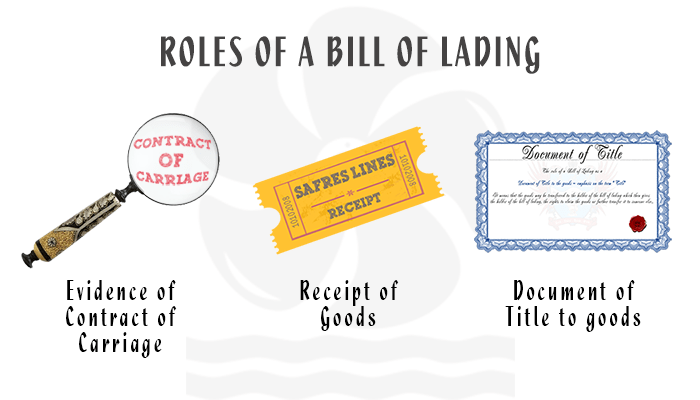Classification of Bill of Lading

Classification of Bill of Lading
Classification of Bill of Lading By method of execution
- Open B/L
- Straight B/L
- Bearer B/L
- Ordered B/L
Classification of Bill of Lading By method of operation
- Received for shipment B/L
- Shipped B/L
- Through B/L
- Combined transport B/L
By method of execution
Open B/L
Unless otherwise expressly provided, the B/L is a freely negotiable document. The open B/L is open to negotiation. However it must be properly endorsed and accounted for .In case the consignee transfers the B/L in favour of a buyer, he must endorse the name of the buyer and authenticate his signature. This chain will go on till the last holder. He is called the holder in due course. He can surrender the B/L and collect the cargo. In case of any abuse or misuse of B/L, the snap can be easily be traced
Straight B/L
The straight B/L is used, when the cargo is intended to be delivered to the consignee only. In a straight B/L only the named consignee can collect the cargo. Even his agent or representative cannot collect the cargo. This B/L cannot be sold or assigned or endorsed in favour of anyone else.
Mostly military cargoes, weapons, missiles , nuclear reactor ,gold bullion etc whose movement has to be kept secret and delivery to be made only to be consignee are covered by these B/L.
Bearer B/L
The bearer B/L is used when it is intended for re-sale without endorsement and authentication. It is freely negotiable. It is highly risky and therefore should be handled with extra ordinary care. In case lost, it is not easy to trace the snap. Mostly the cargoes which are sold in bulk which are intended to turn over in small quantities make use of these types of B/L.
The B/L is drawn blank against the name of the consignee and is sent to the importer in sets (10’s or 100’ etc). The imported would thereafter sell the B/L in sets of (10’s or 100’s etc). The buyer can even further turn over. There is no endorsement or authentication or signature required. The holder in due course who wants to collect the cargo against B/L must enter his name against the consignee and surrender to take the delivery of cargo.
Ordered B/L
This is the most modern type widely used all over the world, Basically it ensures the safety of delivery of cargo to a bonafide holder of B/L . Since the ship visits several foreign ports where the language, practice, procedures may be different the master might be inconvenienced during the delivery of the cargo. People might fraudulently collect the cargo. In order to overcome this difficulty and avoid future cargo claims and litigations, an arrangement is made whereby the consignee or the holder in due course of the B/L is required to surrender the B/L to the ship’s agent at the discharge port who will verify the genuineness of the B/L and the e of the party claiming the delivery. When satisfied the agent will issue a delivery order and the verified B/L. Now any person can collect the cargo from the ship by surrendering the B/L and the delivery note to the ship.
Classification by method of operation
Received for shipment B/L or House B/L
Whenever the cargo is collected by the ship’s agent or charter for future shipment onboard any ship, in accordance with the COGSA, the receipt of the cargo must be acknowledged by a receipt known as B/L. Such a B/L issued by the agent or charter for the future shipment is called as “For shipment B/L or House B/L or received for shipment B/L”. Though it is a valid receipt for the goods collected, it is not a true B/L or official B/L or Ocean B/L. The house B/L or for shipment B/L binds only the receiver of the goods, agent or charter and not the ship owner and the agent.
Shipped B/L
Issued by the ship, when the cargo is actually placed onboard. This is the true B/L or official B/L or ocean B/L. It is a legal document and it binds the ship against the cargo.
Through B/L
This is issued when the cargo is transported by the same ship from the point of loading to the point of delivery directly. It is normally the general cargoes which get transported by more than one ship at different points enroute. This results in cargo loss and damage. When the cargo is required to be delivered point to point intact, through B/L is issued. Many times the freight might even be costlier.
Combined Transport B/L
It is the fore runner for the multimodel transport document. Here the cargo is moved by more than one mode of transport namely road,rail,sea and inland waterways under the same B/L. This B/L got in to problems subsequently whenever cargo claims was raised against loss of damage. It is not easy to pinpoint or locate the place and loss of damage during the transport. Later the combined transport B/L gave way to the modern Multimodel transport document ( MTD) which uses a single document known as the MTD to cover the entire transportation of the cargo from door step to door step.


